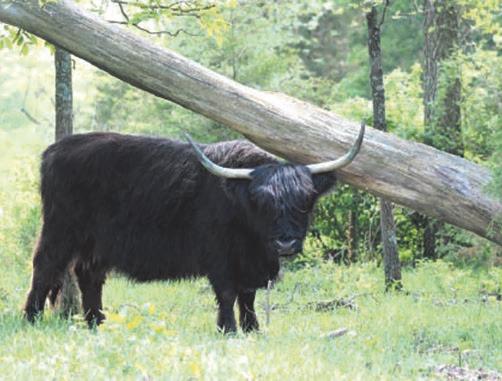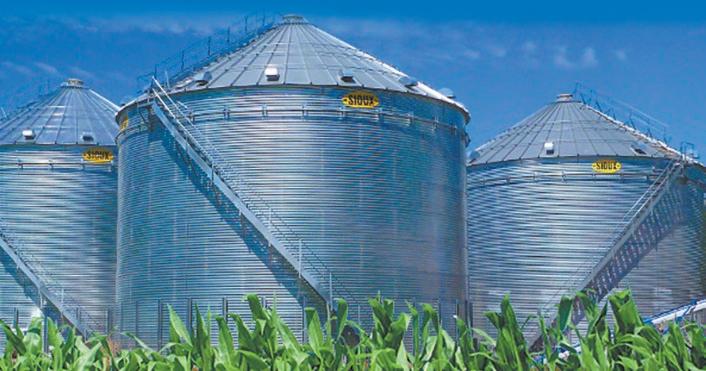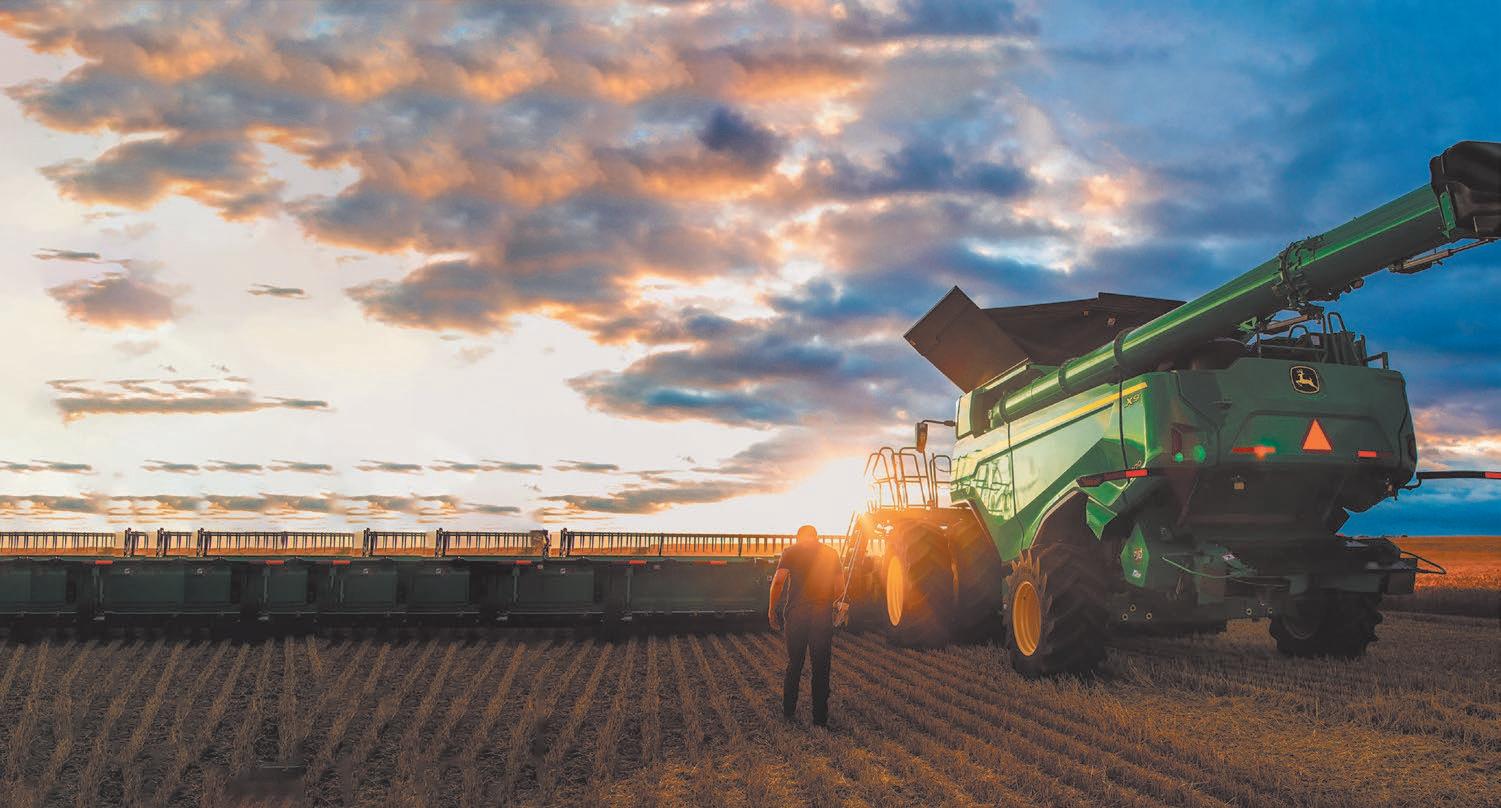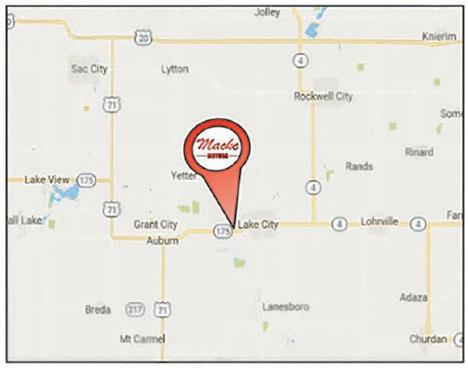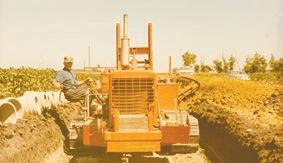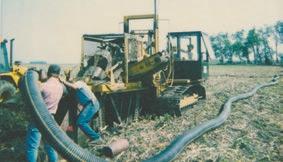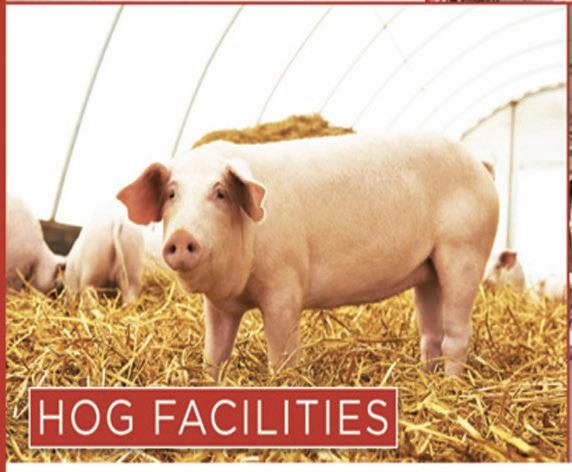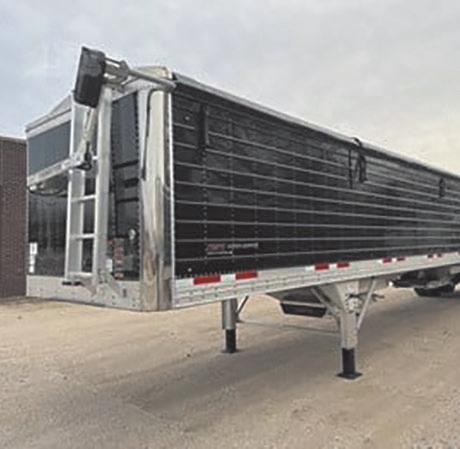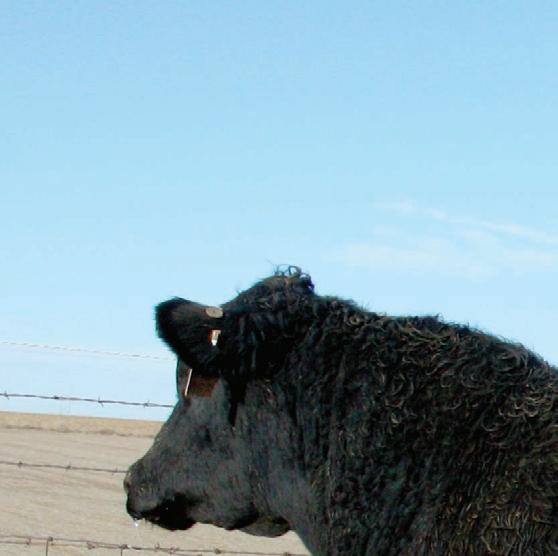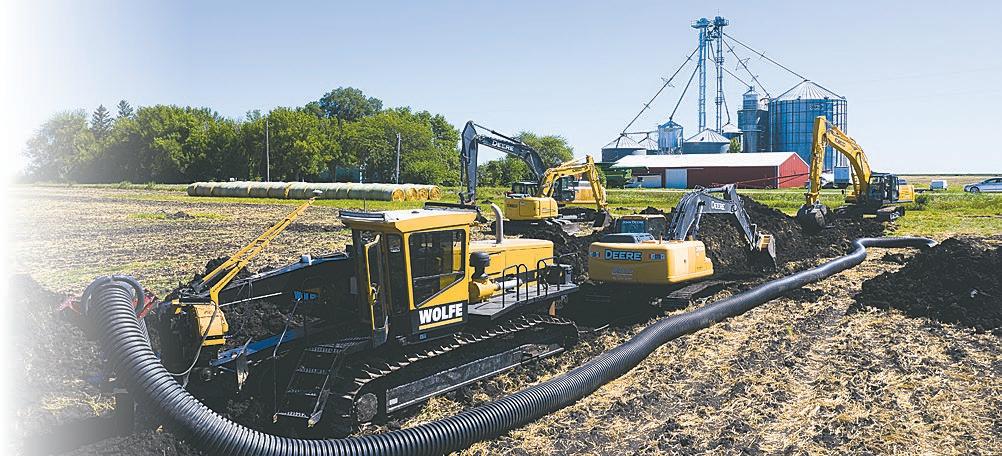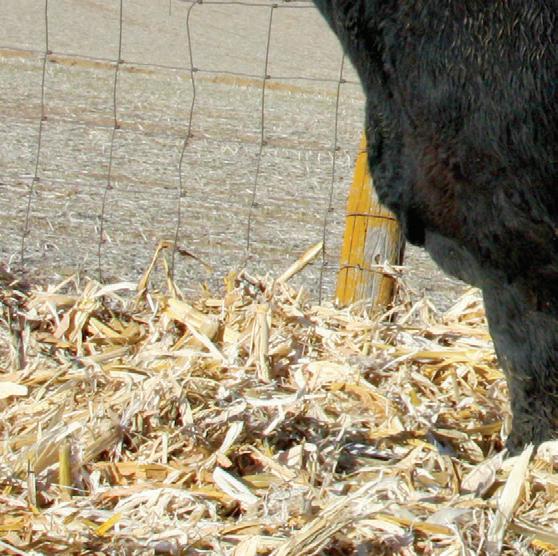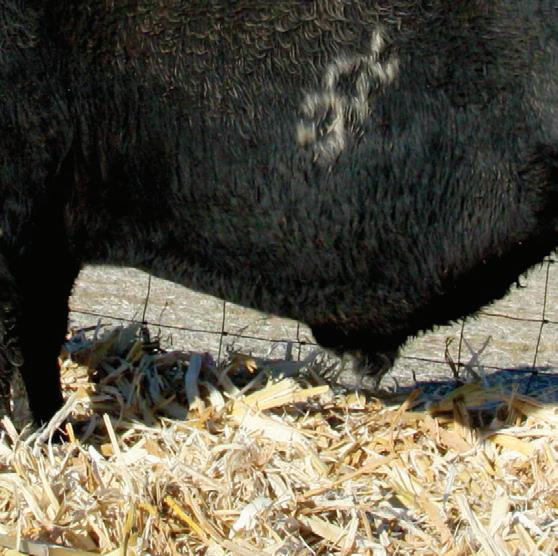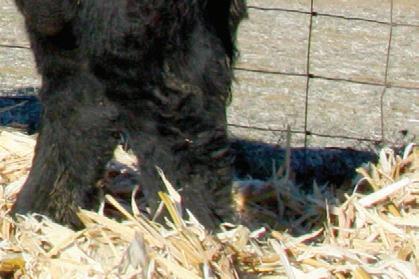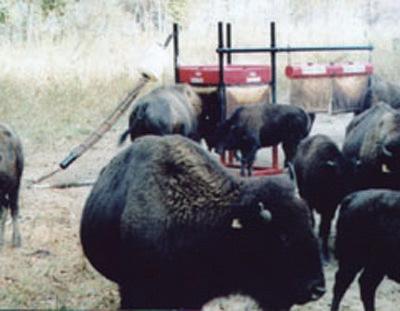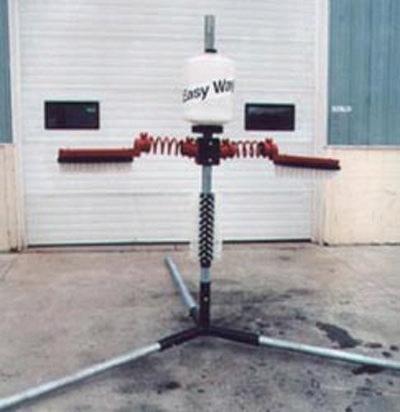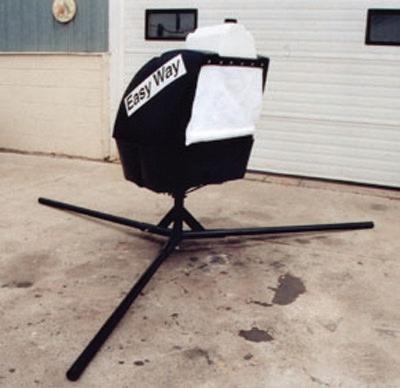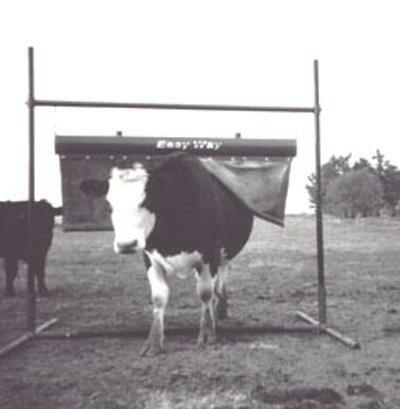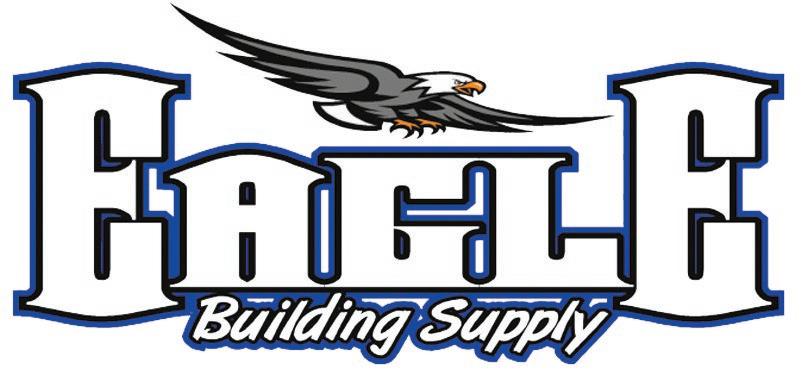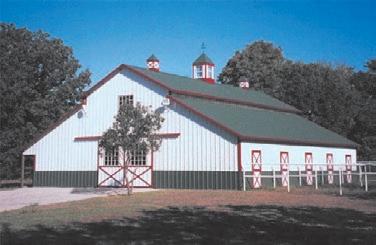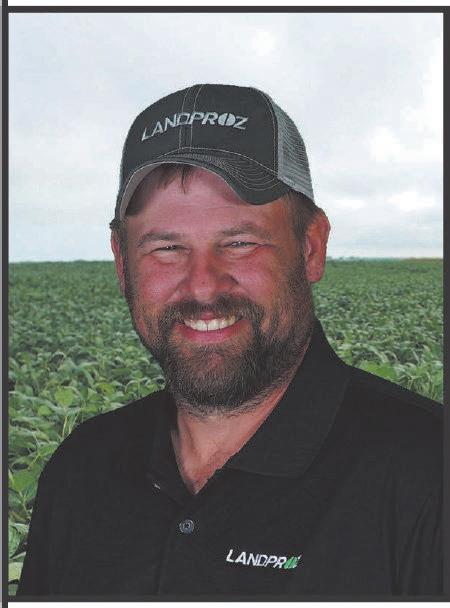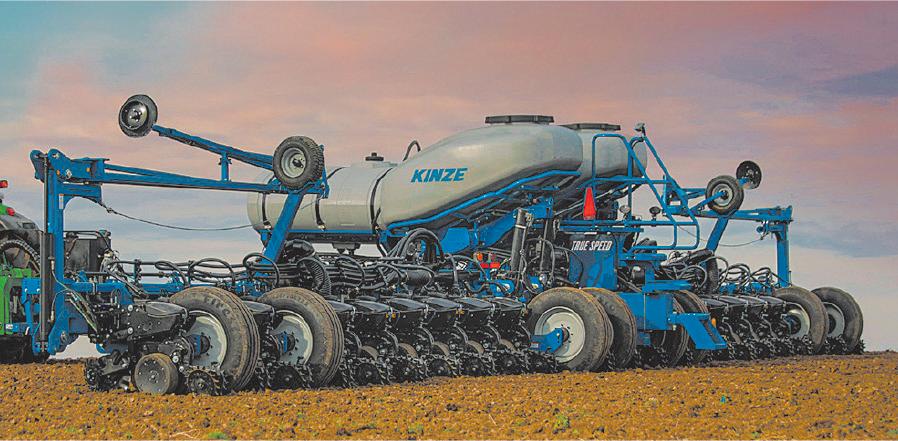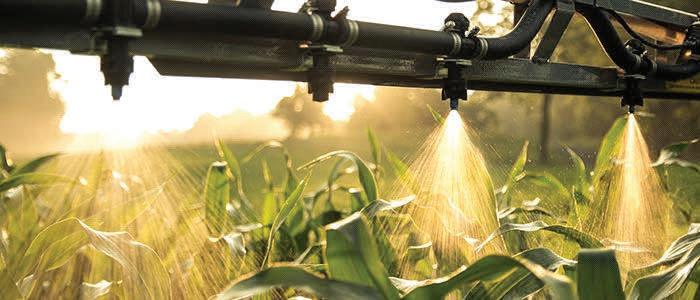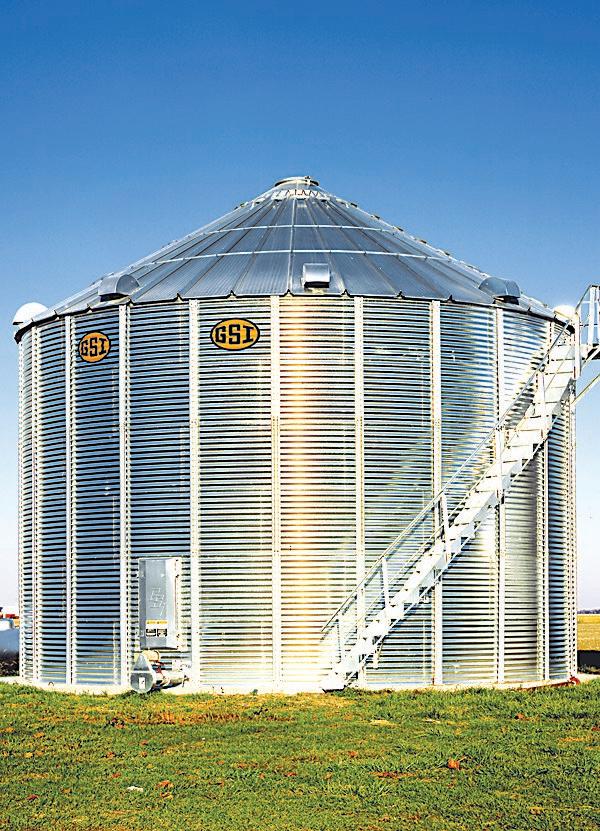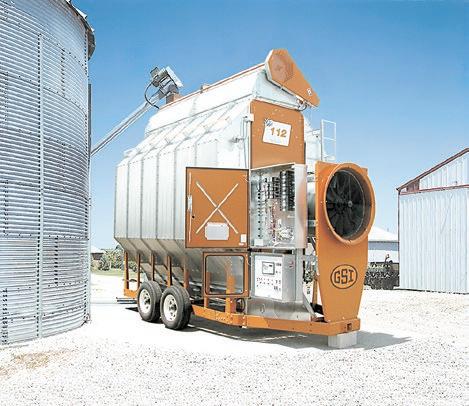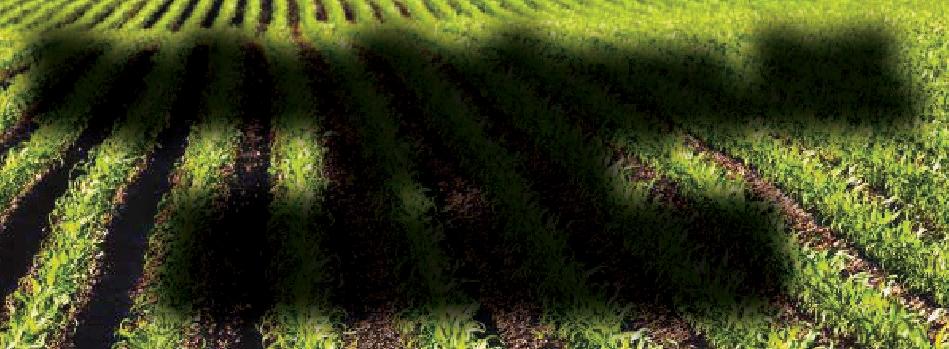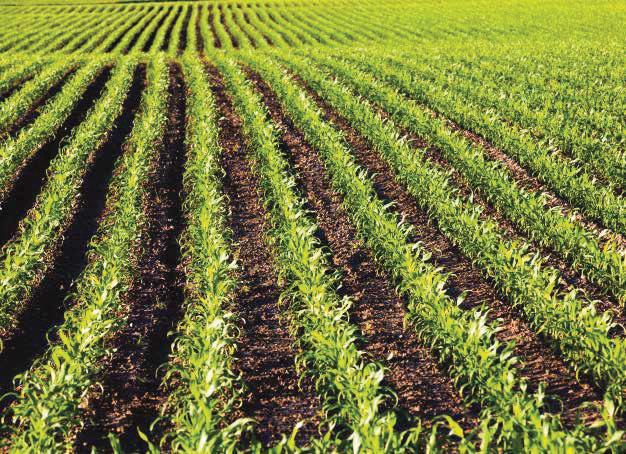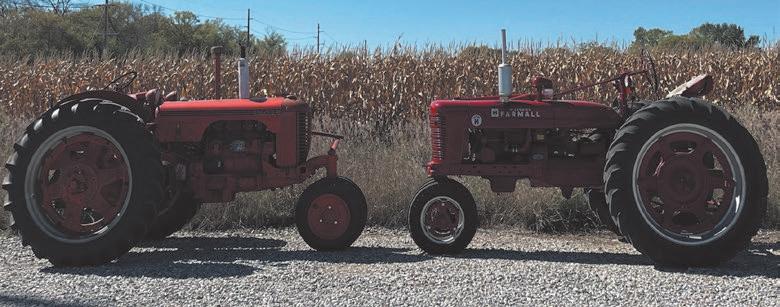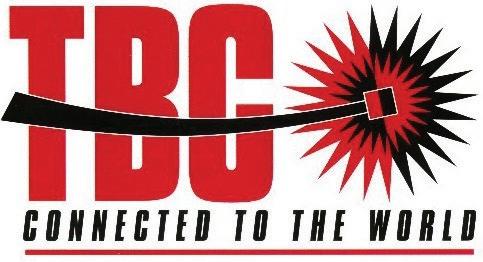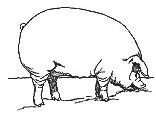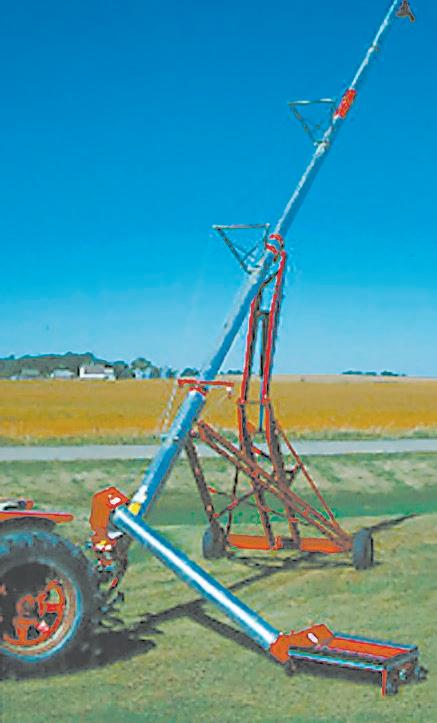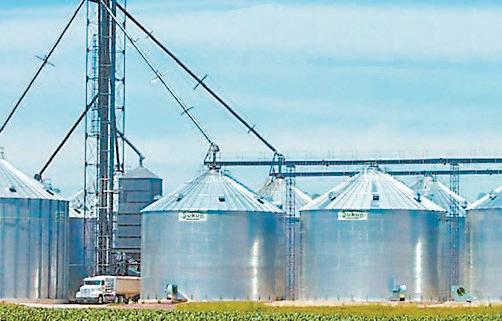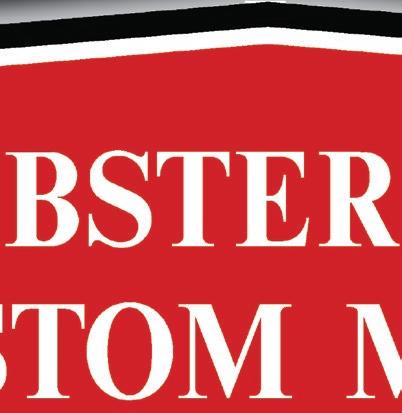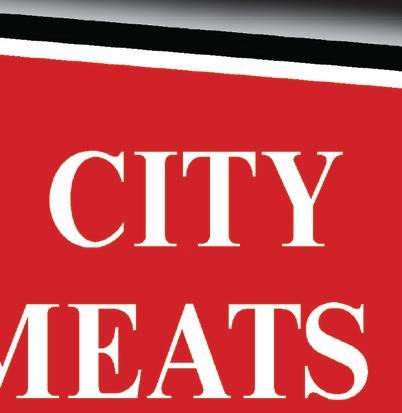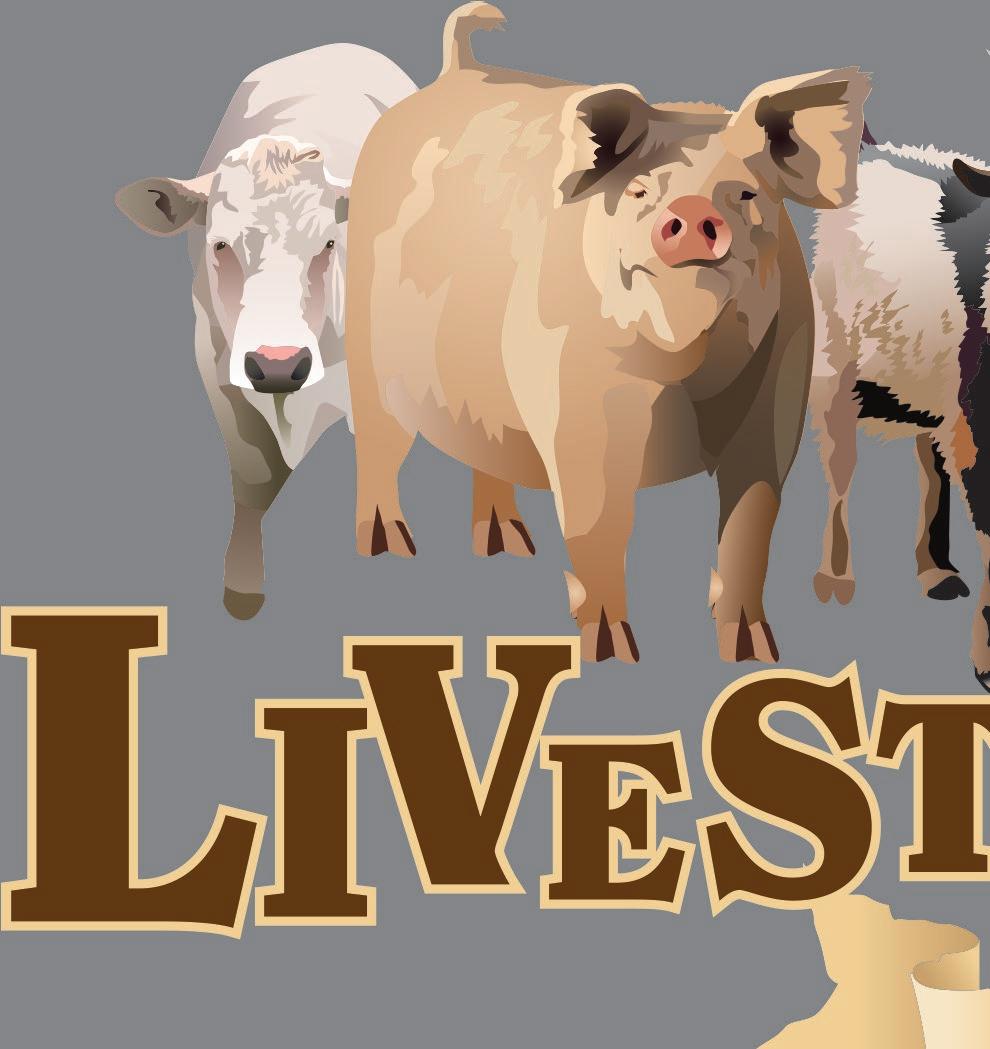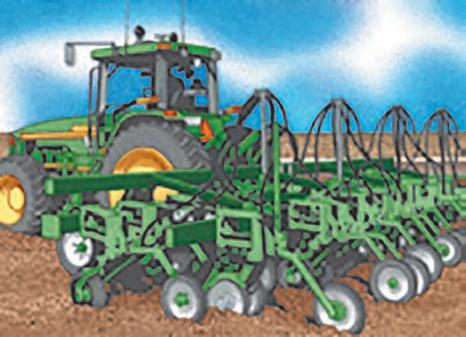






By DARCY DOUGHERTY
DES MOINES — What separates professionallymanaged farms from farms that struggle or fail? The successful farms begin with the end in mind and have a strategy for success.
“How many times do you get to practice farm succession?
Once,” said Dick Wittman, an Idaho rancher and farm management consultant who led a day-long workshop during Commstock Investments’ Family Farm Masterclass in Des Moines earlier this year.
“To keep a legacy alive, you have to figure out a strategy to get there.”
In farming, culture and tradition tend to be on a headon collision with professional management, however.
“Managing a farm business has become a lot more complicated,” Wittman said.
That’s not just an Iowa issue. Farm transition planning is an international challenge.
“How many times does a transitional event become a terminal event?” asked Wittman, referring to major life changes like a heart attack, a major illness, a debilitating accident or retirement. “In our case, we’ve had 12 transitional events, but they’ve made us stronger.”
It’s possible to take the anxiety out of family business succession planning and set the business up for continued success, emphasized Wittman, a former banker who supervised Farm Credit operations in 17 states early in his career. “Proactive succession planning is a choice, and it helps you manage uncertainty.”
Wittman, who is now the board chair and former manager of a 20,000-acre dryland crop, cattle and timber business in northern Idaho, offered seven tips to make strategic planning and succession planning easier and more effective.
“I’ve worked with thousands of farms coast to coast,”
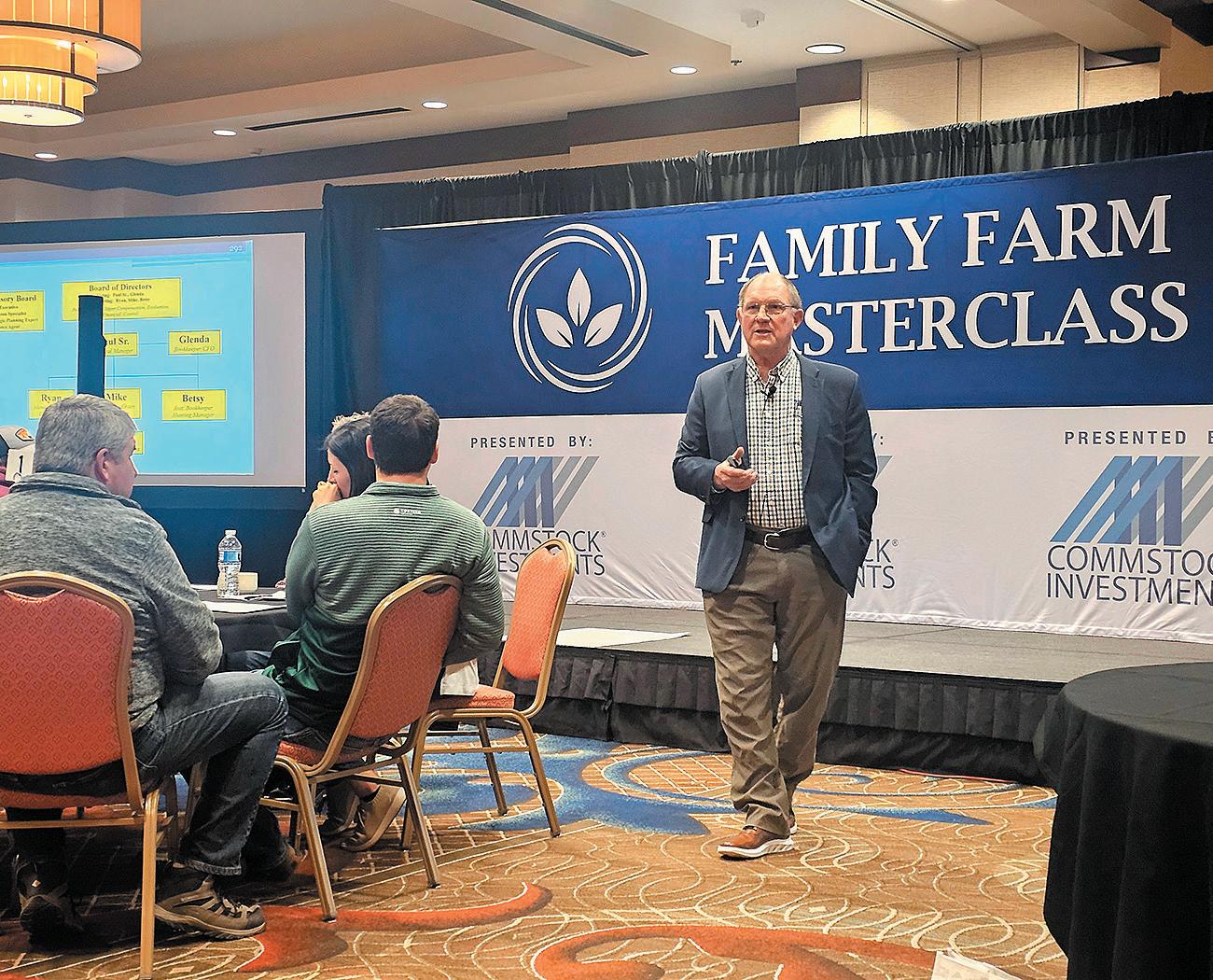
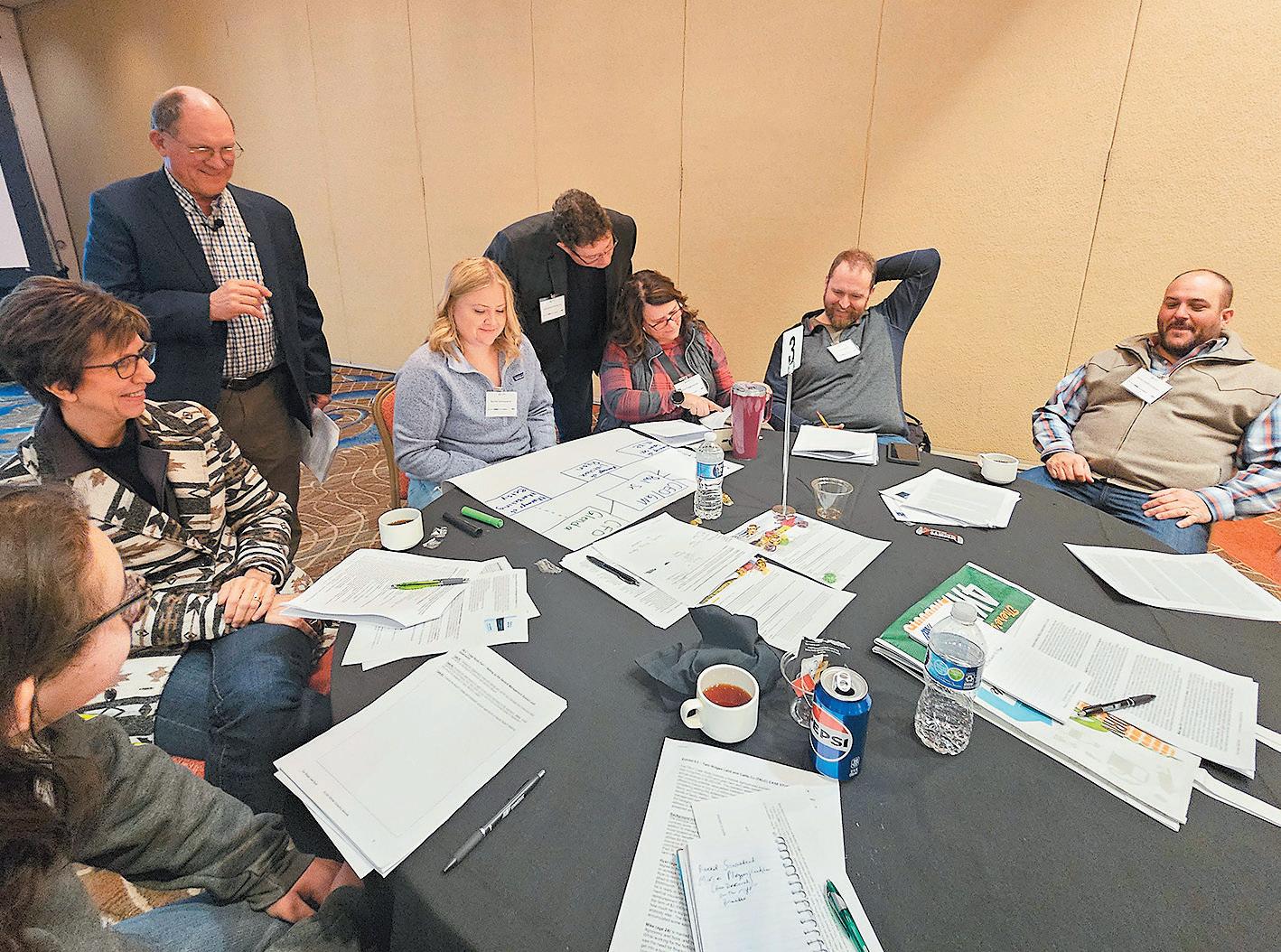
Area youth are being greeted by a new and smiling face at Webster County 4-H events. Kristyn Klemp recently began her new role as the 4-H county youth coordinator in Webster County.
“I absolutely love my job and the people I work with,” said Klemp. “The community here is incredibly supportive, and it’s rewarding to see the positive impact of our programs. Knowing that I help shape future leaders is incredibly motivating and fulfilling.”
While Klemp wasn’t part of 4-H in her youth, she has enrolled her children in Webster County 4-H and has realized the many learning opportunities the organization has that aren’t just for farm kids.
“Being a part of 4-H now has shown me the incredible range of opportunities it offers, from public speaking to community service, and I’m thrilled to be part of such a dynamic and inclusive organization,” said Klemp.
In her role, Klemp oversees youth development programs, community outreach, and educational workshops. She collaborates closely with local schools, community organizations, and volunteers to ensure that 4-H programs are accessible and impactful. Klemp said she also focuses on tailoring programs to meet the unique needs of the Webster County community in order to ensure that youth feel valued and empowered.
“The ultimate goal is to provide opportunities that
By KAREN SCHWALLER Farm News writer
Iowa Secretary of Agriculture
Mike Naig announced the 2025 recipients for the Ag Leader Awards for Outstanding Contributions to Iowa Agriculture at a ceremony which took place last month in Ankeny. Recipients of the leadership awards included three organizations and one business. The Iowa Pork Producers received the “Leadership in Community” Award for their “Bacon Buddies” program, along with Nationwide Agribusiness for their grain bin rescue initiatives.
Pheasants Forever was awarded for “Leadership in Conversation” for their water quality and natural habitat initiatives, while the Iowa Foundation for Agricultural Advancement was recognized for their “Leadership in Agricultural Education” for starting and supporting youth scholarship programs at the state fair. Nationwide Agribusiness Nationwide Agribusiness received the “Leadership in Community” award as a result of their work to improve farm safety and save lives through their marketing campaigns about grain
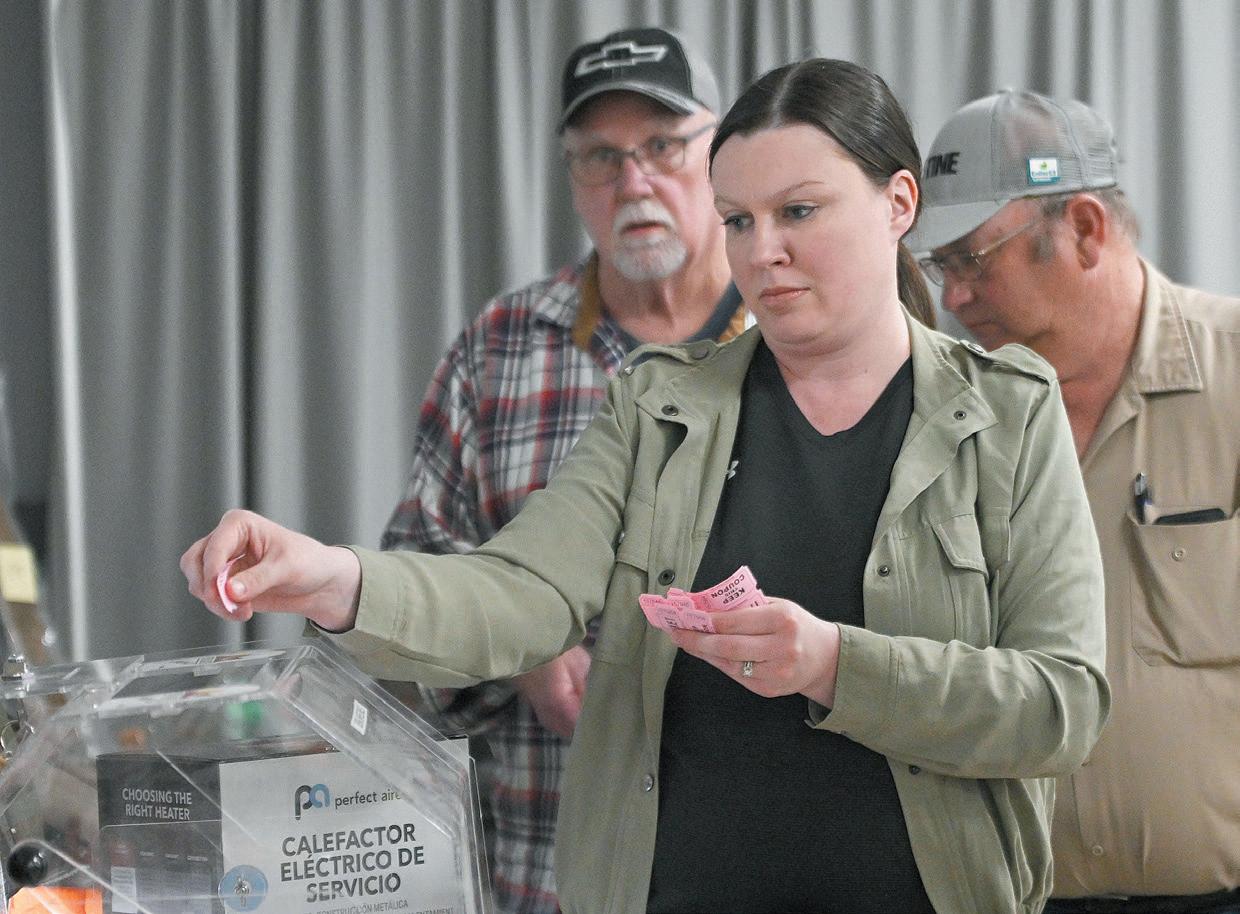








1. Photos must be received NO LATER THAN Wednesday, May 14th
2. Photos will be returned if accompanied by a self-addressed stamped envelope
3. Winners will be announced in our May 23rd issue
4. Photos may be selected for our Farm News 2026 Calendar that is passed out at the 2025 Clay County Fair and inserted into our Nov. 14th Issue.






















NEWS
*R.J. O’Brien & Associates
(RJO), the oldest futures brokerage and clearing firm in the United States, announced that its parent company has reached a definitive agreement with StoneX Group Inc. (NASDAQ: SNEX), to merge all of RJO’s global businesses into StoneX, subject to regulatory approvals and customary closing conditions. Upon the closing of the transaction, anticipated in the third quarter of this year, the combined firm will become a leading futures commission merchant (FCM) in the U.S., enhancing its role in the global financial market structure.
StoneX is a Fortune 100 company with operations in six continents and a market capitalization of over $3.5 billion. Privately held R.J. O’Brien has offices and affiliates in North America, Europe, the Middle East and Asia.
CORN ANALYSIS
Corn closed the week $.05 3/4 lower. Last week, private exporters announced sales of 4.7 million bushels (mb) of corn to Japan and 4.3 mb of corn to Portugal. In the weekly export inspections report, U.S. corn export inspections, for the week ended April 10, were 72 million bushels, up from the previous week’s 63.5 mb, well above last year’s sameweek exports of 53.7 mb and were the second highest of the 2024-25 marketing year so far, falling just short of the 72.6 million bushels exported the week of March 6. Over the last four weeks, U.S. corn export inspections averaged 65.2 mb/week v.s last year’s 54.7 million/week average during the same period, allowing cumulative export

inspections of 1.477 billion bushel to maintain a 31% gain to last year’s 1.132 billion with 20 weeks remaining in the 2024-25 marketing year. In order to reach the USDA’s just-raised 2.550 billion bushel export projection, corn inspections will need to average roughly 40.3 million bushels/week through the end of August vs. last year’s 45.8 million/week average from this point forward.
In the weekly EIA report, U.S. ethanol production for the week ended April 11, declined to 1.012 million barrels/day from 1.021 mbpd the previous week, falling to a 29-week low. Specifically, ethanol production will need to average roughly 1.063 mbpd during AprilAugust to reach the USDA’s corn demand target vs. last year’s 1.049 mbpd average from this point forward. U.S. ethanol stocks last week also ticked lower to 26.814 million barrels from 27.034 million barrels the previous week, while remaining slightly above last year’s sameweek stocks of 1.095 billion gallons and just below record stocks for the second week of April of 1.138 billion gallons in 2020. Despite the slight decline last week, though, ethanol stocks in days of production held steady at 26.5, the highest in 51 weeks, highlighting the continued historically high levels of ethanol stocks.
In the weekly crop progress



and conditions report, U.S. corn is 4% planted vs. 2% last week and 6% last year.
STRATEGY & OUTLOOK
Producers should look to add 2025 hedges on rallies as the U.S. will plant a large amount of acres next spring.
SOYBEANS ANALYSIS
Soybeans closed the week $.06 1/2 lower. Last week, private exporters did not announce any export sales.
In the weekly export inspections report, U.S. soybean export inspections last week were 20.1 mb, while continuing the seasonal decline in falling from the previous week’s 29.9 mb and were the lowest in 29 weeks but still above last year’s same-week exports of 16.4 mb. Over the last four weeks, soybean export inspections averaged 27.6 mb/ week vs. last year’s 20.6 million/ week average during the same period, allowing cumulative inspections of 1.547 billion bushels to tick up to an 11% gain to last year’s 1.397 billion, the largest percentage year-over-year gain in seven weeks. In order to reach the USDA’s 1.825 billion bushel export projection, soybean export inspections will need to average roughly 10.7 mb/week through the end of August vs. last year’s 12.3 million/week average from this point forward.
In the weekly crop progress and conditions report, U.S. soybeans are 2% seeded vs. 3% last year.
The monthly NOPA crush report saw crush at 194.5 mb, slightly below the average estimate of 195.7 mb and last year’s 196.4 mb. Soybean oil stocks were 1.498 bp, well below estimates of 1.612 bp and yearago levels of 1.851 bp.
STRATEGY & OUTLOOK
Producers should look to add 2025 hedges on rallies.
WHEAT ANALYSIS
For the week, Chicago wheat closed $.07 3/4 lower and Kansas City wheat closed $.14 1/4 lower. Last week, private exporters did not announce any export sales.
In the weekly export inspections report, U.S. wheat export inspections last week of 22.2 mb, rising from the previous week’s 12.3 mb and were the highest in 29 weeks, but still comparable to last year’s sameweek exports of 22.8 mb, putting cumulative export inspections at 672 million bushels, up 14.4% from last year’s 588 million, while the USDA’s just-lowered 820 million bushel export projection reflects an expected 16% increase from last year. Over the last four weeks, wheat exports averaged 17.7 million bushels/week vs. last year’s 19.6 million/week average during the same period, while wheat inspections will need to average roughly 16.3 mb/week over the final seven weeks of the 202425 marketing year to reach the USDA’s annual target vs. last year’s 14.3 million/week average from this point forward.
In the weekly crop progress and conditions report, winter wheat conditions are 47% g/e vs. 48% last week and 55% last year while spring wheat is 7% planted vs. 3% last week and 7% last year.
STRATEGY & OUTLOOK
Producers will want to use rallies to hedge new crop wheat amid large supplies and large stocks-to-usage ratio.
LIVE & FEEDER CATTLE
ANALYSIS
Last week, live cattle closed $7.42 higher while feeder cattle closed $8.10 higher.
The monthly COF report saw on feed supplies slightly higher than expectations with on feed supplies at 98.4% vs. estimates
of 98.2%, placements were much higher than expectations at 105.1% vs. estimates of 103.4% and marketings were slightly more than expected at 101.1% vs. estimates of 100.7%.
Last week, moderate at best fed cattle cash trade in the North at $212 to $214 live and $332 to $335 dressed, which is $4 to $6 firmer both live and dressed. Light to moderate trade volumes in the South were at $210 live, which is $6 higher than last week. The latest USDA steer carcass weights were down 6 pounds from last week at 944 pounds, which is 21 pounds above yearago levels.
Net beef export sales were 17,400 mts for 2025 with shipments of 14,600 mts. Last week, boxed beef sales increased 210 loads from the prior week. At 890 loads, export sales were 131% of the prior week and 108% of the same week last year. Year-to-date boxed beef sales were down 289 loads from last year at 12,348 for a 2.2% year-on-year decline.
STRATEGY & OUTLOOK
The outlook for the second quarter of 2025 is bullish due to tight supplies, however locking in minimum price levels with put options is good risk management.
LEAN HOGS ANALYSIS
Lean hogs closed the week $4.50 higher.
Iowa/southern Minnesota weekly hog weights for the week ending April 12 has weights at 291 pounds vs. 292 pounds last week and 288.0 pounds last year. Net pork export sales were 20,500 mts for 2025 with shipments of 30,900 mts.
STRATEGY & OUTLOOK
The tariffs will hurt pork exports, leaving rally attempts as selling opportunities.
Easter is a strange holiday in that it’s constantly moving around on the calendar like a hyperactive mouse who has just consumed its body weight in caffeine.

If you were born on the Fourth of July, you would know that your birthday always falls on the fourth. Its day of the week varies from year to year, which means that you are given a three-day weekend every few years to celebrate or recover from your birthday.
Not so if you were born on Easter. The formula that determines the dates for Easter involves tracking the phase of the moon and checking to see if Jupiter has aligned with Mars. No, wait. That’s how we will know if it’s the Age of Aquarius.
In any event, if you were born on Easter and if someone asks when your birthday is you would have to reply, “I was born in late March, but my birthday often comes in early to mid-April. It can even arrive as late as May 1 if you go by the Julian calendar. I’ll have to consult my calendars and my ancient astronomic charts and get back to you.”
Despite the fact it can change its dates as easily as a baseball player changes his socks, Easter is traditionally a holiday that’s chockfull of traditions. One of my most cherished traditions involves getting together with my family and eating so much food that we chant our traditional incantation, “I can’t believe I ate the whole thing!”
A traditional food my family enjoys at all major holidays is lefse. For the uninitiated, lefse is a thin, flatbread-like substance that’s made from potatoes. It’s the Scandinavian version of a tortilla.
Mom taught all of her daughters and many of her grandchildren how to make lefse. Mom’s recipe produces lefse that’s thin as Bible leaves and as delicate as lace. I have tried other people’s lefse and have found that it’s often best suited for shoe repair. Thankfully, Mom also passed
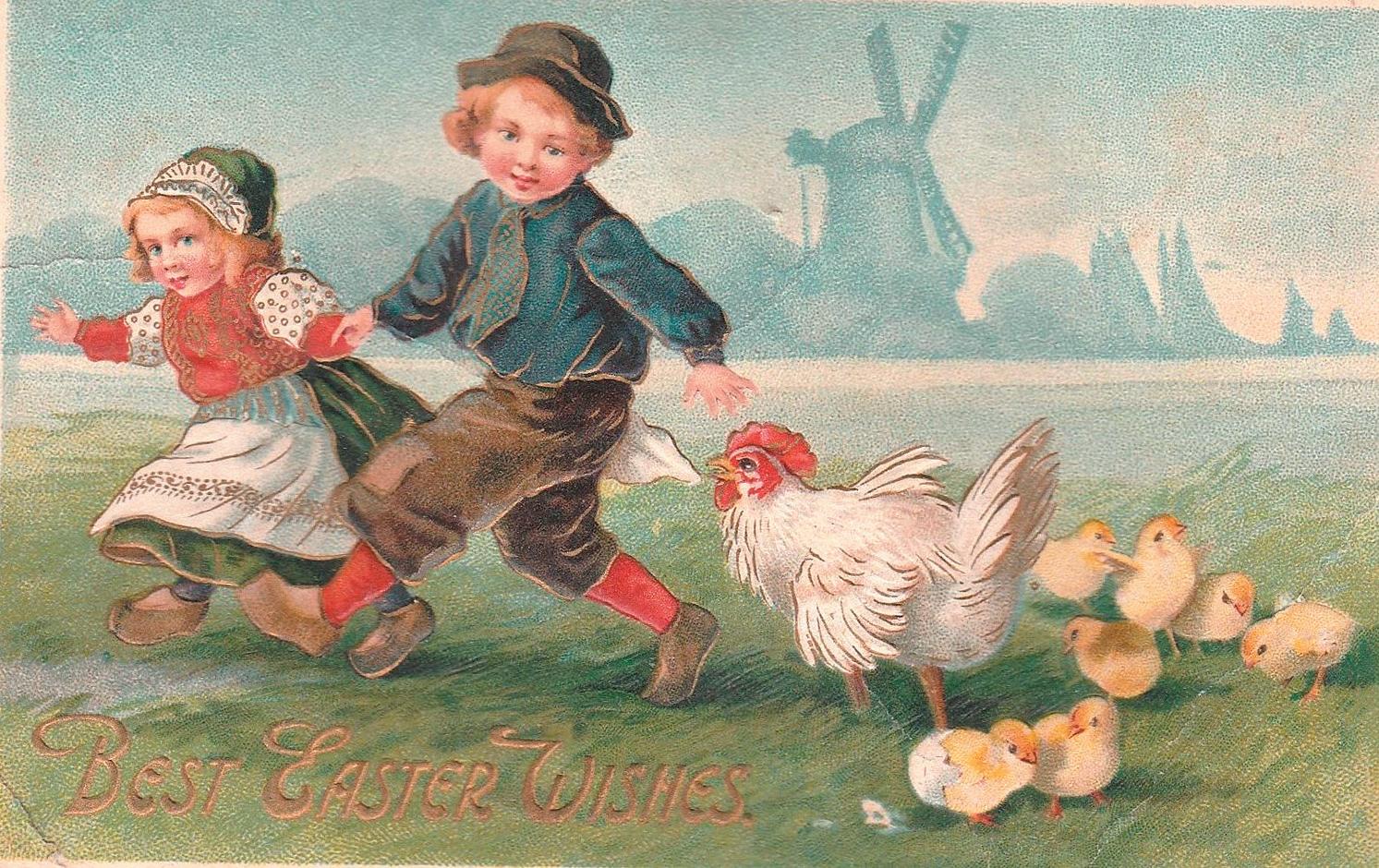
along her lefse recipe, which contains a traditional ingredient called “instant potatoes.” This is because boiled potatoes must be riced before they can be made into lefse, and ricing a pile of boiled potatoes involves approximately as much manual labor as digging the Grand Canyon.
One Easter tradition that seems to have fallen by the wayside is sending Easter greeting cards.
I have somehow come into possession of postcards that were sent during the Easters of 1917 and 1919 by my great-aunt Clara, my grandma Nelson’s sister, to her parents, my great-grandparents.
For you young whippersnappers, postcards are the equivalent of a text. Except that you can’t delete them once they are sent. And it could take several days for them to arrive at the recipient.
The price of a postage stamp back then was a penny. I imagine the postcards themselves cost at least as much, effectively doubling the price tag for Clara to send her epistles.
The cover of Clara’s 1917 postcard features a pair of Dutch children. We’re talking wooden shoes, a windmill, and kids decked out in traditional Dutch garb. In a strange twist, Clara wrote her message to her parents in Norwegian, their first language.
It’s difficult to decipher Clara’s cursive, which is faded and written in pencil, and I know no Norwegian. Complicating matters is that
Clara seems to have thought that punctuation is totally optional. Even so, I was able to sense the feelings behind the salutation which reads, “Kjaere Mama og Papa.”
It doesn’t take much to figure out that Clara, a young newlywed at that time, missed her parents.
The postcard was simply addressed to “Mr. & Mrs. C.N. Sveen, Volga, South Dakota.” There’s no rural route number, and I was disappointed to see that Clara had neglected to include a ZIP code. But then I learned that ZIP codes weren’t put into use until 1963.
The 1919 card is written in English and was addressed to “Miss Elida Nelson, Volga, South Dakota, c/o C.N. Sveen.” My grandma Nelson.
Clara didn’t share any earthshattering news. She wrote that she hoped everyone was doing well back at home and that she had spent the day washing clothes before posting the card. Crowded into supertiny script in a margin is, “Alex sends greetings.” Alex was Clara’s husband.
There isn’t much that’s notable about these notes. But it’s clear that Clara was striving to sustain a connection over long distances with her family during the Easter season. I hope that Clara was able to enjoy some family time during those
ago Easters. And I would be
to bet that her family
involved heaps of sumptuous, delicate lefse.

It is no exaggeration to say that much has changed since the first metal plow sliced into the thick, fertile Iowa soil. The annual cycle of planting and harvesting continues, but just about everything else about farming has changed. And it is technology that has caused much of that change.
The animals that pulled those first plows have been replaced by tractors, which have become massive machines that have cabs packed with computers and other electronics. Those tractors and the other machinery farmers use are just the most visible examples of technology’s impact on agriculture. Even the seeds are impacted by technology.
In this edition of Farm News, you will find a special section exploring ag technology. In its pages, you will learn about:
n The evolving use of drones in agriculture.
n How to properly get planters ready to go for the spring planting season
n Tips on how to avoid getting ripped off in an age when so much business is done digitally rather than in person.
Those are just a few examples of the technology Iowa farmers use now and no doubt will use even more in the coming years.
Because of the massive impact of technology on agriculture, Farm News is pleased to bring you this special publication. We think you will find it enjoyable and informative.

Longtime readers of this weekly effort may recall my affection for the word woodenheadedness.” It comes from “The March of Folly,” Barbara Tuchman’s 1984 book about the pervasive presence … of failure, mismanagement, and delusion in government.”
In Tuchman s telling, history is filled with the pursuit by government of policies contrary to their own interests despite the availability of feasible alternatives.
For example, this contrariness — or as she often refers to it, woodenheadedness — is seen in King George III’s picking a fight with American colonists or America’s “own persistent mistakes in Vietnam. Both led to predictable failures by stubborn instigators who refused to relent despite clear evidence of even larger, “more spectacular” failure ahead.
“‘More spectacular’ failure ahead” sure sounds like what export-dependent U.S. farmers and ranchers now face as the Trump Administration continues its failing, completely incomprehensible tariff policy that not even its ardent MAGA supporters can explain.
And yet, no hard fact deters the president’s insistence that his everchanging, “beautiful” tariff program will work sooner or later. For example, one goal of the indecipherable tariffs on China, says the White House, is to bring back to America high-paying, high-tech jobs “like iPhone assembly.”
By any U.S. standard, however, there are no “high paying, high-tech” jobs in China. According to one business
news service, the “average monthly salary for an iPhone assembler in China is around $500 to $1,000 depending on overtime and location.”

Alan Guebert
Another reports that workers at Foxconn, another major Apple supplier, may earn 19 to 20 yuan (U.S.-$2.76 to $2.90) per hour.”
Those two irrefutable facts lead to two obvious realities. First, no American will leave their current job for the chance to earn 1970s wages assembling high-tech anything in the U.S. now or in the foreseeable future.
Second, Apple and its high-tech competitors will find ways around tariff-impacted Chinese manufacturing costs that avoid any eight- to 10-fold increase in labor costs. The most obvious strategy is — surprise, surprise — lobby the White House for an exemption from the businessstrangling, economy-cracking tariffs.
If the goal, as has been explained repeatedly by the woodenheaded White House, is to raise U.S. wages and government income while punishing China, the Trump Administration punted away that opportunity on one of the first days of its Administration in its first Administration, Jan. 23, 2017.
On that day, the new Administration noisily announced the U.S. would leave
‘America First’ is not new a new concept
The president’s world view reflects the America First doctrine with his perception of national interest rather than democratic or moral principles guiding his actions coming to Putin’s rescue. President Trump has used the phrase repeatedly … “America First … America First … America First” in order to let it soak in. America First doctrine has gone around the merry-go-round several times in our nation’s history. It goes back a long way, expanding and contracting in its influence on public opinion. It has at times represented the majority opinion for what American policy should be comprised of. Today, if polled, a large number of Americans like the “sound” of America First as a mantra, but I question if many really know what it is or its history.
The America First doctrine entails three primary tenants:
1) Protectionism where U.S. producers and industry are often protected by use of tariffs, which in the early history of the country was a primary source of federal revenue and allowed the fledgling U.S. economy safety from global competitors. After having virtually disappeared for several decades, tariffs are coming back in spades, initiated by President Trump and then sustained by his successor.
2) Protectionism through extending barriers to immigration that picked and chose the times, types and number of immigrants accepted legally. White supremacism and anti-semantics’ were often repeated throughout instances of U.S. history as the door to immigration opened and closed. It is now closing.
3) Absence of intervention in foreign relations is favored. America takes care of itself in an America First fashion where singular U.S. interests, rather than the promotion of any set of

higher principles, is the focused purpose. The KKK and rise of the German Bund prior to WW II was the hey-day of the America First movement in that century. Until now. America First is on the rise again, shows no sign of slowing, or to what height that it ultimately will rise to.
These three tenants were not always equally forcibly applied, with one or another taking precedent and often one or another being absent during periods of assertion. What makes this time different from history is the energy of their universal inclusion of this president’s application of America First doctrine. He is promoting it all. The doctrine has never been so aggressively applied as U.S. policy as it appears it will be today.
America First policy is as old as the country as founding presidents used tariffs as trade barriers to protect the growth of the fledgling development of the country to become selfsupporting of our independence. Back then it was defense while this time the doctrine is being applied as offense. America First primarily became GOP policy from William McKinley on, who Trump has praised for use of tariffs. There was some deviation from the movement by Theordore Roosevelt, who supported making territories of Cuba and the Philippines and Woodrow Wilson who tried to add the U.S.
to the League of Nations post WW I. After the U.S. losing a million men in WW I, America First came roaring back into its own with a Jim Crow component during the 1920s and 1930s with Herbert Hoover, Henry Ford, and Charles Lindbergh as a few of its many champions. FDR was elected, despite America First sentiment, which at times polled the support of over 80% of Americans, because of the Great Depression. The movement grew strong in the years prior to WW II. The day before December 7th 1941, an overwhelming majority of Americans supported the U.S. staying out of foreign entanglements, and the Day after Pearl Harbor, 97% of Americans favored going to war and the America First organization, their equivalent of MAGA, immediately disbanded. FDR was not an America First supporter but he was limited by it in what foreign policy he could employ and deftly dealt with it politically. When he died, the America First movement revived, led by Ohio Sen. Robert Taft. Post WW II, America created NATO and Dwight Eisenhower became its first Supreme Commander. He met with Taft, a fellow Republican, and could not convince him that NATO, The Marshall Plan, World Bank, IMF, Voice of America, U.N. or any other international organization with U.S. leadership was worthy of U.S. support. He then decided to contest Taft for the GOP presidential nomination, which he won along with the presidency. That created the world order that I grew up with that lasted most of my life ... until now.
A Russian dissident recently said that the current situation in the U.S. looked like our version of the “the collapse of the Soviet Union,” from his perspective. The world recently just saw the
the almost-completed Trans-Pacific Partnership (TPP), the 12-nation free trade organization then almost built to bring together 40 percent of the global economy that rimmed the Pacific Ocean.
Just as important as who was in the TPP group — Australia, Japan, Mexico, Canada, the U.S. and others — was who wasn’t in the group, China. In fact, the TPP’s exclusion of China was a founding principle of the organization. It was to be a powerful and decisive tool to swiftly discipline and counter the rising global power if it stepped out of line.
The Trump Administration’s withdrawal, however, had the opposite effect: it weakened any market clout TPP members might build over China, diluted most of the stiff trading rules sought by the U.S. and, in the end, left the door open to China’s entrance into the very group conceived to keep it out.
Worse, the U.S. walked away from the very successes the current Trump Administration claims it will get — it won’t — through its uncooked, unseasoned tariff hash.
According to the International Trade Commission, leaving the TPP cost the U.S. an anticipated $42.7 billion increase in GDP through 2032 and $131 billion of “gains to U.S. real incomes ... through 2030.” Now, eight woodenheaded years later, here we go again.
U.S., Russia and North Korea vote together at the U.N. The BBC reported, “The U.S. has twice sided with Russia in votes at the United Nations to mark the third anniversary of the Russian invasion of Ukraine, highlighting the Trump administration’s change of stance on the war.”
President Trump says that Putin has just done what anyone else would have done in new attacks on civilians in Ukraine. A world investigative body confirmed their conclusion that Putin is a war criminal. That is not “just anybody.”
President Trump has the “America First” attitude toward “foreign entanglements,” seeing them being no value to the U.S. and as having taken advantage of the U.S. The U.N. will be asked to pay up or leave their premises in NYC. He has withdrawn from the Paris Climate Accord and even ordered NOAA to cease collaboration with foreign weather agencies. The WTO will be ignored entirely. U.S. participation with the WHO has been broken. It is doubtful that the U.S. will maintain support for any world organizations despite having created most of them. U.S. military alliances will be reevaluated and maintained only if the U.S. is compensated.
Ukraine and Taiwan are feeling the brunt of that change to a mercantile U.S. History rhymes rather than repeats itself, and if there is deviation from traditional America First doctrine by President Trump, it would be in the realm of territorial expansion. He wants to rank high among U.S. presidents in adding square miles to U.S. territory. He recently asked Speaker Johnston if he had a portrait of President James Polk at the Capitol that he could hang in the Oval Office and traded him for one of Thomas Jefferson of which
the White House had two. In his first term he favored a portrait of Andrew Jackson who was the most populist U.S. president who decimated Indian tribes to open 25 million acres of territory for the westward expansion of slavery. Bet that gets scrubbed from the Smithsonian. If he can, President Trump will expand the realm of which he declares to be under U.S. hegemony to become a president to be remembered for his addition to U.S. territory and then withdraw from the rest of the world while taxing them to interact with us. When his term(s) end, I think that he will be richer than either Elon Musk or Vladimir Putin. He is looking to add more territory to the U.S. than any other president. Here is what he is up against.
n Louisiana Purchase — Thomas Jefferson, 823,000 square miles.
n Alaska Sewards Folly — Andrew Johnson, 663,000 square miles.
n Texas/southwest U.S. — James Polk, 1,000,0000 square miles
n Greenland — Donald Trump, 836,000 square miles
n Canada — Trump, 3,855,000 square miles
Adding Greenland would beat Alaska in size but it takes some of Canada for him to become the president adding the most new territory. Canadians and Greenlanders do not appear to appreciate the vinegar that the president has forced on them and it is difficult to see how either will be made to capitulate to become U.S. territories by means of coercion and belligerence. I think that a smile, outstretched friendly hand and sugar would have elicited a better response to begin a dialogue of how we can merge our aligned interests. Nobel Peace Prize for ending Russian/Ukraine war is the coveted cherry on top.

DES MOINES — Landus announces Sam Caton as its interim CEO effective today. Caton will maintain his responsibilities as executive vice president of sales while stepping in to lead the cooperative as interim CEO.
“We have full confidence in Sam’s abilities to guide Landus forward as the interim CEO. His sincere appreciation for the farmer-owners we serve has quickly built trust within the organization and helped him develop a deep understanding of our operations and vision,” said Chairman of the Board Matt Chambers.

Sam Caton
“We have full faith in his leadership as we start the next chapter at Landus and implement the search to identify our next CEO.”
Caton brings more than two decades of agricultural industry experience to the interim CEO role. Previously, as the business unit director of the Northern Region at Simplot, Caton demonstrated exceptional leadership in managing complex business integrations. He is an established forward-thinking leader in agricultural business and technology adoption but doesn’t shy away from his roots. Before moving into sales, Caton owned and operated an 8,000-acre family farm and cattle ranch, an experience that equipped him with an authentic understanding of agricultural operations from the ground up.
Caton’s first order of business will be leading the search for Landus’ next CEO, which will start with listening to the farmer-owners within the cooperative.
“I’m honored, and frankly humbled, to be trusted with the exciting task of leading Landus forward, and I know the best way to do so is with the guidance of our farmers,” Caton says. “I’ll be establishing an open line of communication with our farmer-owners to hear directly from them on what they want to see from the next CEO of the cooperative, and I look forward to working with our board to identify the next leader of Landus.”
During this transition, Landus remains steadfast in its commitment to its farmer-owners, employees, business partners and the future of agriculture.
Avian influenza detected in Hardin Co.
DES MOINES — A case of highly pathogenic avian influenza has been detected in a mixed species backyard flock in Hardin County, according to the Iowa Department of Agriculture and Land Stewardship and the United States Department of Agriculture (USDA) Animal and Plant Health Inspection Service (APHIS). This is Iowa’s seventh detection of avian influenza within domestic birds in 2025.
Highly pathogenic avian influenza (H5N1 HPAI) is a viral disease that affects both wild and domestic bird populations. It can travel in wild birds without those birds appearing sick, but is often fatal to domestic bird populations, including chickens and turkeys. HPAI can also impact dairy cattle, and 13 cases were detected in Iowa dairy herds in June of 2024. With supportive care, dairy herds recover with limited, or no mortality associated with the disease.
The Iowa Department of Agriculture and Land Stewardship is strongly encouraging Iowa poultry producers and dairy farmers to bolster their biosecurity practices and protocols to protect their flocks and herds. In addition, the Department has numerous biosecurity resources for poultry producers and dairy and livestock farmers to reference on its website.
If poultry producers or those with backyard birds suspect signs of avian influenza, they should contact their veterinarian immediately. Possible cases must also be reported to the Iowa Department of Agriculture and Land Stewardship at (515) 281-5305.
Clinical signs of H5N1 HPAI in birds may include: sudden increase in bird deaths without any clinical signs; lethargy and/or lack of energy and appetite; decrease in egg production; soft, thin-shelled and/or misshapen eggs; swelling of the head, eyelids, comb, wattles, and hocks; purple/blue discoloration of the wattles, comb, and legs; difficulty breathing; coughing, sneezing, and/or nasal discharge (runny nose); stumbling and/or falling down; and diarrhea.
Forage webinar series begins May 1
ORANGE CITY — The I-29 Moo University and the Northern Plains Forage Association have joined forces to continue the annual Forage Webinar Series from 7 to 8:30 p.m. on May 1 with a variety of forage topics, including a spring forage climate outlook, a forage market outlook and a discussion on interseeding with summer annuals.
Presenters are nationally recognized leaders on their topics.
Madelynn Wuestenberg is an agricultural climatologist with Iowa State University Extension and Outreach, dedicated to enhancing climate resilience in Iowa’s agriculture and food systems.
She will analyze the most recent climate outlooks and where to find reliable weather information.
Paul McGill, owner-manager of Rock Valley Hay Auction, will share his insights on where the hay market is headed and what the season looks like from his perspective.
Dr. Shelby Gruss is the Iowa State Extension forage specialist and has a strong interest in forage cover crops. Her presentation will explore the opportunity to extend the productivity of a declining alfalfa stand by interseeding a summer annual. It will cover how to assess stand health to determine if supplemental forage is needed and outline practical strategies for successful integration and management.
There is no fee to participate in the webinar; however, registration is required at least one hour prior to the webinar. Register online at: https://go.iastate.edu/ SPRINGFORAGE25
For more information contact: in Iowa, Fred M. Hall, 712-737-4230; in Minnesota, Jim Salfer, 320-2036093; or in South Dakota, Madison Kovarna, 605688-4116.
CLIVE — The Iowa Pork Producers Association’s “Purchase Moore Hamann Bacon” initiative was the big winner at the Best of NAMA awards recently.
The National Agri-Marketing Association judged 950 award entries in more than 60 categories, and “Purchase Moore Hamann Bacon” was proclaimed the Grand Champion. The initiative also won Best of Show for communications to consumers, and first place for Social Media campaign directed to consumers.
“Purchase Moore Hamann Bacon” started in September 2023 as a Name, Image, and Likeness (NIL) partnership between Iowa Pork and Iowa State Cyclone football players Myles Purchase, Tyler Moore, Tommy Hamann and Caleb Bacon, to encourage people to purchase more ham and bacon. A photo of the four Cyclones, strategically placed behind a large ham and 14 pounds of bacon, went viral across social media, gained significant national media attention, and was named Best NIL Deal of 2023 by the Sports Business Journal.
The Iowa Pork Producers Association partnered with the
Meyocks agency for a sequel in 2024. A series of video skits featured Purchase, Moore, Hamann, and Bacon serving as judges while several of their teammates and other Cyclone student-athletes tryout to be part of the campaign.
A retail component was also added to this year’s effort. Hy-Vee’s top 200 stores across the Midwest displayed “Purchase Moore Hamann Bacon” signage as part of a tailgate promotion in September and October, designed to boost pork sales. The effort succeeded.
“Iowa pork producers are thrilled with the response to ‘Purchase Moore Hamann Bacon’ and kudos to everyone involved in this effort,” said Aaron Juergens, a pig farmer from Carroll who serves as president of the Iowa Pork Producers Association. “We’re grateful for the Iowa State Cyclone student-athletes, the We Will Collective, Meyocks, Hy-Vee, and IPPA staffers Kevin Hall and Joyce Hoppes, who led the charge to make it all happen.”
“This is a great example of a partnership that not only engages our consumers but also helps Iowa farmers and pork producers,” said Jason Pride, Hy-Vee vice president
of meat and seafood. “We also want to thank the Iowa Pork Producers Association for being a partner in our efforts to reduce hunger across the state with the tremendous donation to food banks across Iowa.”
IPPA donated $1,000 worth of pork to the food pantry of choice for each Cyclone student-athlete that participated in the promotion, and an additional $16,000 worth of pork to the Iowa Food Bank Association. The effort amounted to nearly 50,000 servings of valuable protein for people facing food insecurity.
“This initiative promoted pork in a positive way, boosted pork sales in Hy-Vee stores across the Midwest, and stocked food pantries with valuable protein to help folks who are less fortunate. Great job by everyone involved,” Aaron Juergens added.
IPPA thanked Myles Purchase, Tyler Moore, Tommy Hamann and Caleb Bacon and for all their efforts during this partnership, to all the other student-athletes who joined the initiative, and to the We Will Collective, a nonprofit organization that helped organize the Cyclones’ participation in the promotion.
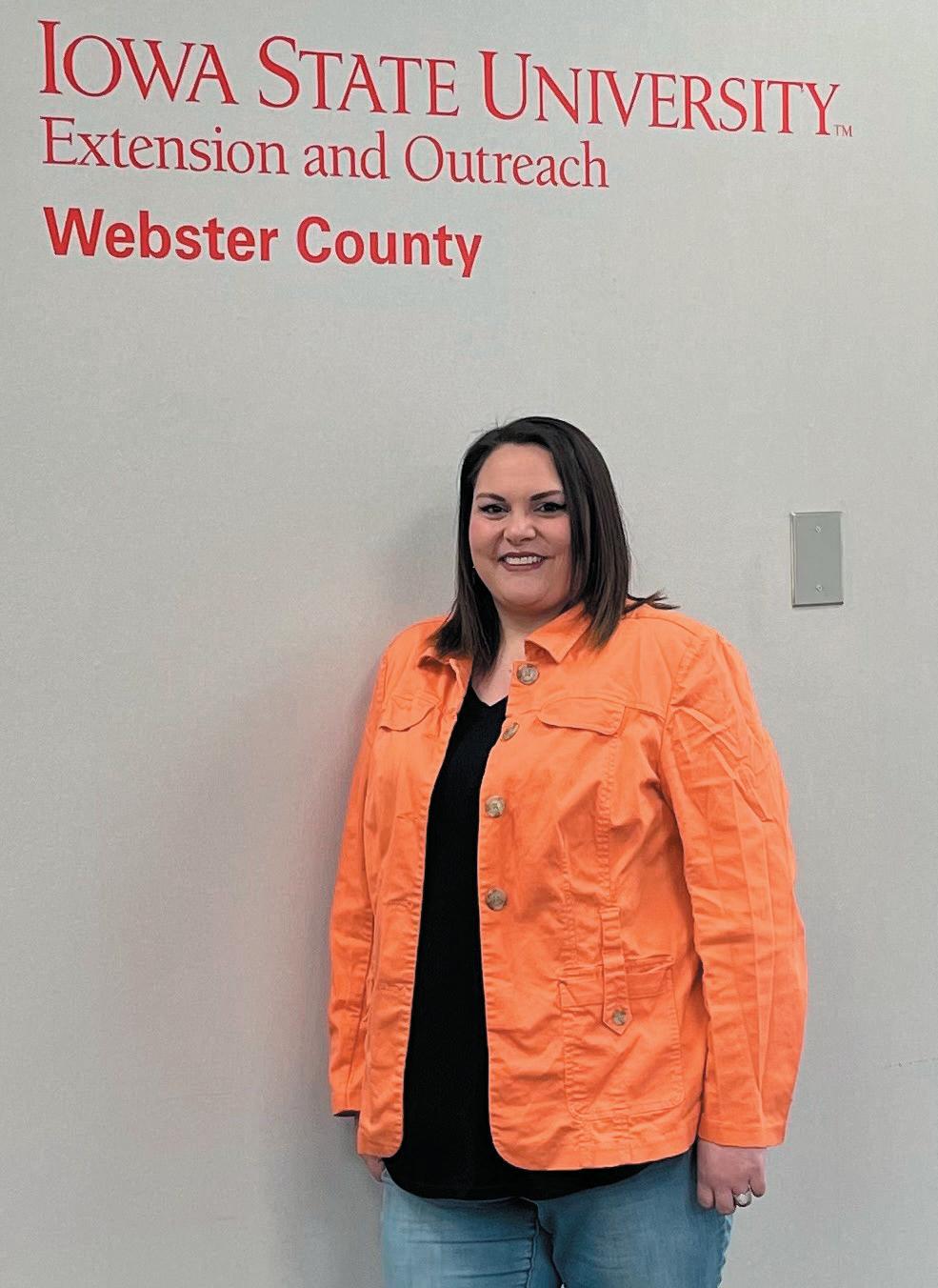
for Webster County.
“It’s not just about agriculture; it’s about developing life skills, leadership, and community engagement. 4-H is for everyone and has so much to offer.”
4-H county youth coordinator for Webster County
Klemp Continued from Page 1A
inspire and equip young people to reach their full potential, making a lasting difference in their lives and the community as a whole,” said Klemp.
Klemp and the staff at Webster County Extension are currently busy putting together the 2025 Webster County Fair book, and while the administrative chores
aren’t her favorite job task, she’s looking forward to seeing 4-H’ers smiles and accomplishments at the fair.
“It’s not just about agriculture; it’s about developing life skills, leadership, and community engagement,” said Klemp. “4-H is for everyone and has so much to offer. Our programs offer a wide range of interests including science, technology, engineering, and math (STEM), health and wellness, arts and crafts, and civic responsibility.”
Parents and youth interested in learning more about 4-H in Webster County can contact Klemp at 515-576-2119 or kristynk@ iastate.edu.
Wittman said. “When I came home to farm and started my consulting business in the 1980s, I had to practice what I preach.”
1. Establish core values, a mission statement and vision statement. While all these things may sound a little touchy-feely, they are substantive issues that form the foundation of any successful business, Wittman said. Core values are the fundamental beliefs and principles that guide your behavior, decisionmaking and overall direction for the farm. Sometimes called non-negotiables, core values can include honesty, integrity, innovation, a commitment to professional management, open communication, environmentally-conscious farming methods, accountability, creativity and more. They influence the mission statement, which should concisely describe: (1) the key product or service the business offers, (2) the target market or primary customer, and (3) the primary business objective to be accomplished. “The mission statement can be a guiding torch to test the legitimacy of every goal, strategy and action plan implemented in the business,” Wittman said. “If any farm activity or decision appears in direct conflict with the mission statement, either the activity is illadvised, or the mission statement is incorrectly stated.”
The vision statement defines where your business will be at the end of the journey, Wittman said. Every vision will be unique to the farm. “For many farm families, their vision is to be financially secure at retirement and position the business so potential successors are ready and willing to continue the legacy.”
2. Assess your farm’s culture. How do you measure how you’re doing? Try a culture audit, Wittman said. “One of the biggest changes I’ve seen in agriculture in the last 20 years is the importance of culture,” Wittman said. Workplace culture refers to the shared values,
AMES — Food labeling can be a confusing landscape for small food businesses.
From nutrition facts to allergen declarations, packaging requirements can feel overwhelming — but a new workshop aims to simplify it. Iowa State University Extension and Outreach’s Farm, Food and Enterprise Development program is offering a handson workshop, “What’s on Your Label? A Bite-Sized Food Labeling Course,” to help Iowa food entrepreneurs better understand and meet food labeling regulations. The workshop will be from 10 a.m. to noon June 4 at the ISU Extension and Outreach Polk County office in Altoona. The cost to attend is $50, and registration is open now to food business owners, home-based kitchens, processors and anyone navigating food labeling requirements. Registration deadline is June 2.
“Creating an accurate and compliant food label is one of the most important — and often most overlooked — steps for food businesses,” said Alex Van Alstyne, food business specialist with ISU Extension and Outreach. “This course is a great opportunity for entrepreneurs to gain clarity on regulations and walk away with practical tools they can use immediately.”
Participants are encouraged to bring their product or existing food label to the workshop, which will include a live label review and Q&A session. Topics will include the basics of FDA-compliant labeling, including nutrition panels, ingredient statements, allergen declarations, health and marketing claims and more. The session will be led by Troy Crowe, a food scientist with over 30 years of experience in product and process development, regulatory compliance, continuous improvement, technical solutions, formula optimization, plant operations and management, and quality systems.
For more information, contact Van Alstyne at alexv@iastate.edu.
beliefs, attitudes and assumptions that team members within an organization hold, shaping how they interact and behave. Use three adjectives of your choice to describe the current culture in your farm business, Wittman said. They might be “tense,” “avoidance,” “confrontational,” “hostile,” “unprofessional,” “chaotic,” or “resentment” if things aren’t working well. Also select three adjectives you wish described your farm’s culture, like “collaboration,” “harmony,” “compassion,” “open-minded,” “focused,” “respectful,” “equal,” “communicating,” or “teamwork.” Score your farm business on “living it” versus “aspiring to” when it comes to culture. Have a team discussion on the results, as well as the causes of poor scores. Have an action plan to improve, Wittman said. Let your mission statement, vision statement and core values help guide the farm’s culture. It’s also useful to have everyone involved in the farm business take a personality test, like the DISC behavioral assessment. This helps people understand their natural behavioral preferences and tendencies. Assessments like this can help improve teamwork, communication and productivity in the workplace, Wittman said. “A self-assessment tool can be much more helpful to show someone they’re not a manager than just telling them, ‘You’re not a manager,’” said Wittman, who noted that these tools can help determine the right role for each person in the farm business.
3. Define structures. Passing a family-owned business along to the next generation isn’t easy. The data show that half of family businesses fail to go to the second generation, and barely 10% pass to the third generation. Wittman noted there are often three stages of a family business, including 1.) owner-managed, 2.) sibling partnership, 3.) cousin collaboration. “What stage you’re in has a lot to do with building an optimal business structure,”
Continued from Page 1A
bin and all-terrain vehicle (ATV) safety.
“Grain Bin Safety Week” was launched in 2014 with a goal of increasing awareness of the importance of following safety practices and protocols when working in and around grain bins. Their platforms include media and social engagement, as well as resources for first responders to receive lifesaving grain bin rescue equipment.
In a statement on the company’s website, Brad Liggett, president of Agribusiness at Nationwide, said, “We are honored to receive the Ag Leader Award from Secretary Naig. This recognition underscores our commitment to the safety and wellbeing of the agricultural community. We will continue to champion initiatives that protect and support those who feed America.”
Nationwide Agribusiness works with the National Education Center for Agricultural Safety and other partners to provide emergency personnel with grain bin safety equipment, rescue tubes and handson rescue training. The partnership has provided hands-on rescue training to more than 332 fire departments in more than 32 states, and their work has been documented to have saved 13 lives so far.
Nationwide Agribusiness also works with the ATV Safety Institute and Recreational Off-Highway Vehicle Association to promote safety training programs that can help improve operator safety and prevent accidents, both on and off the farm.
Pheasants Forever Pheasants Forever received the “Leadership in Conservation” Award as the organization celebrates 100 years this year. Information
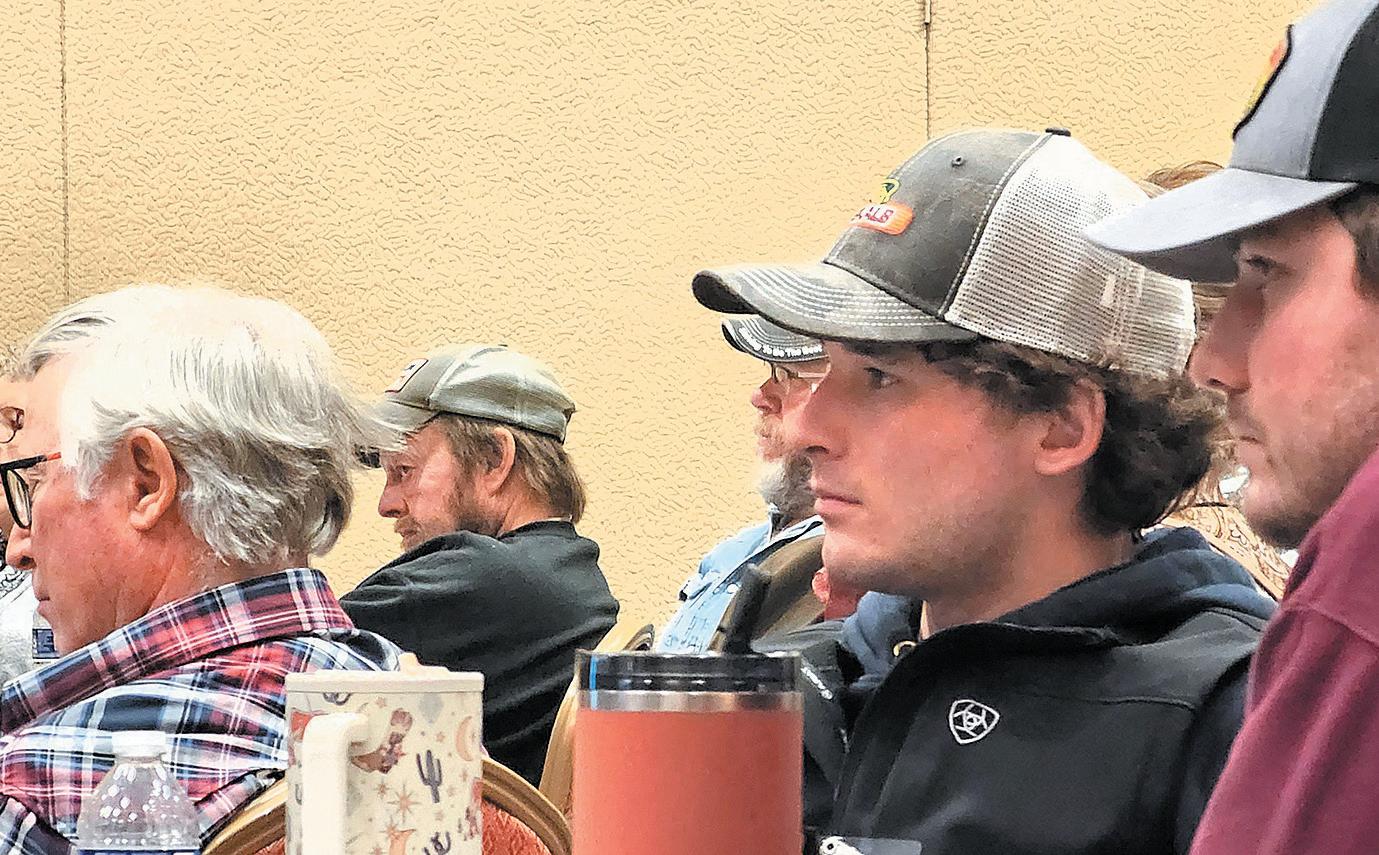
“We’re in a world with totally different dynamics than 50 years ago. When you don’t get these farm management issues right, you may destroy a business, along with family ties and other important relationships. Professional management is a key to succeeding and getting the next generation involved in farming.”
DICK WITTMAN Farm management consultant
Wittman said. “The journey of a family business begins with the founder in survival mode, followed by professional mode that might include some nonfamily management. That’s when a more formalized structure and job descriptions become more important.”
4. Use written job descriptions. You can’t delegate what you can’t define. Written job descriptions provide clarity and pinpoint accountability for team members. Job descriptions also help new hires focus on qualifications and skills. In addition, job descriptions double as a guide for training and work assignments, plus they provide a
about the organization states that Pheasants Forever is a “committed conservation partner, whose investments on private lands improve and protect Iowa’s natural resources.”
Iowa Pheasants Forever and Quail Forever chapters have helped establish 618,000 acres of nesting cover since 1985, along with 313,000 acres of food and cover plots, planted more than 11 million trees and shrubs on private lands and restored 19,000 acres of wetlands.
The Iowa Department of Agriculture and Land Stewardship has entered into an agreement with Pheasants Forever to provide funding for assistance with conservation practice implementation, a partnership that has been going since 2019. It partially funds biologists across the state who provide technical assistance to landowners and farmers.
Biologists assist farmers and landowners with enrolling in conservation programs through oneon-one meetings, on-farm technical assistance and workshops to develop conservation plans, habitat proposals and other management plans.
“Receiving the IDALS Ag Leader Award for Leadership in Conservation is truly an honor for Pheasants Forever and Quail Forever in Iowa,” said Josh Divan, Iowa state coordinator for Pheasants Forever and Quail Forever.
“Every day, our team is focused on assisting farmers and landowners with their land-use goals supporting wildlife habitat, productive farms, and rural economies. We hope this recognition increases awareness among landowners that Pheasants Forever and Quail Forever team members can provide on-
crop-share arrangements and other payment arrangements are just one part of the equation. “Farmers often don’t account for ‘invisible’ compensation, like free lodging, free meals or the use of the farm pickup,” Wittman said. “Each dollar of these benefits is worth twice as much as W-2 dollars.”
5. Put things on paper. It’s not enough just to think or talk about these farm management topics. “Getting this stuff out of our heads and on paper is critical,” Wittman said. “If you don’t deal with this, I guarantee you’ll have conflict.”
6. Distinguish between strategic and operational planning. Farmers tend to be opportunists and reactionaries, whether that means reacting to the markets or the weather. While operational planning (specific, short-term activities) is important, so is long-term, strategic planning. “Do you have a clearly-defined strategy for growth?” Wittman asked. “Ask questions like, ‘How did the business get to this point?” and ‘Where do we want to go in the next three to five years?’”
basis for performance appraisals, Wittman said.
For appraisals, consider using the “5 Lists” technique, where the supervisor and the employee(s) each answer these 5 questions: 1.) What strengths do you bring to this operation? 2.) In what areas do you need to improve?
3.) What can I (supervisor) do to help you do a better job? (Then the employee and supervisor should compare lists.) 4.) What personal development steps will you take to improve performance and skills? 5.) What are your key goals for the coming year?
Also, don’t forget to address financial compensation in a professional manner. Wages,
farm technical assistance throughout the state.”
Iowa Foundation for Agricultural Advancement
The Iowa Foundation for Agricultural Advancement received the “Leadership in Agriculture Education” Award due to their efforts to (among other things) help youth participate in and receive scholarship monies for the sale of “Champion” and “Reserve Champion” animals at the Iowa State Fair.
Until the late 1980s, 4-H and FFA youth earning the top placings for their livestock were often rewarded with less than market price for their exhibits, according to information provided by the Iowa Department of Agriculture and Land Stewardship.
That changed following the 1987 fair sale, when a group of livestock industry supporters decided to ensure that the work of champion projects was fully awarded and to provide more incentives for other youth to participate in livestock projects. That thinking brought forth the Iowa Foundation for Agricultural Advancement (IFAA) in 1988.
While the initial mission was to provide funds to support the sale of grand and reserve champion projects at a premium, the IFAA has since expanded to reach


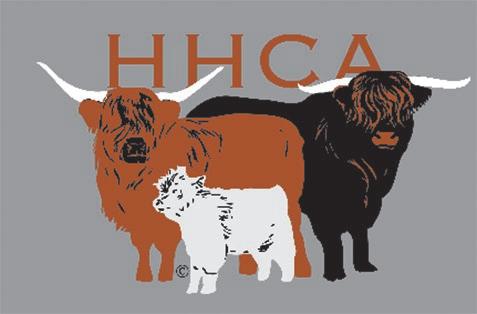
7. Craft a policy to deal with your blessings. Proper business planning helps the farm generate profit. The profits beyond the budget are financial blessings, Wittman said. Instead of letting all that money sit in a bank account, have a plan for how to maximize that money, whether that’s through investments, charity or other options.
All these professional farm management strategies are more important than ever, Wittman stressed. “We’re in a world with totally different dynamics than 50 years ago. When you don’t get these farm management issues right, you may destroy a business, along with family ties and other important relationships. Professional management is a key to succeeding and getting the next generation involved in farming.”
more youth through scholarship programs and performance awards. To date, more than $7 million has been raised through multiple partnerships to support Iowa youth and Iowa agriculture.
Jack Bair of Elkhart, a board member of the IFAA, said the entire board was excited to receive this recognition.
“The foundation has worked for 40 years to select scholarship winners pursuing ag degrees in the state of Iowa,” he said, noting that the 501(c)(3) foundation’s board is made up entirely of volunteers with an ag background.
Bair said this year alone they will distribute nearly $250,000 in scholarship monies and awards at the state fair. They raise their scholarship funds primarily through endowments by individuals and corporations, but Bair said some of their scholarship money comes from commissions from their annual “Sale of Champions,” which includes the top 16 animals at the state fair (beef, swine, sheep, goats and poultry), who go through the show ring specifically for the purpose of helping raise money for those scholarships.
“We’d like to think we give a little more ‘twist’ for the (youth) who maybe has to get up a little early before band practice in the morning to feed their lambs or a little more effort
for the kid that goes home after football practice and works with his lambs or calves to help them learn to lead,” Bair said. “We feel like our scholarships are a little more exclusive than some.”
IFAA President Matt Heiller added, “The IFAA is honored to receive this award. It is a testament to the collective effort of our foundation and, more importantly, our incredible supporters. We are grateful to have been part of an event with so many organizations dedicated to empowering the next generation of agricultural leaders and ensuring a bright future for agriculture in our state.”
The Iowa Pork Producers and their “Bacon Buddies” program was featured in a previous issue of Farm News, with the organization receiving the “Leadership in Community” award. The Ag Leader Awards ceremony in late March ended the state’s weeklong Iowa Ag Week, and included remarks from Iowa Gov. Kim Reynolds and a keynote address from U.S. Secretary of Agriculture Brooke Rollins.
The dinner is hosted by Naig, organized by the Iowa Department of Agriculture and Land Stewardship, and funded by the Iowa Economic Development Foundation.

